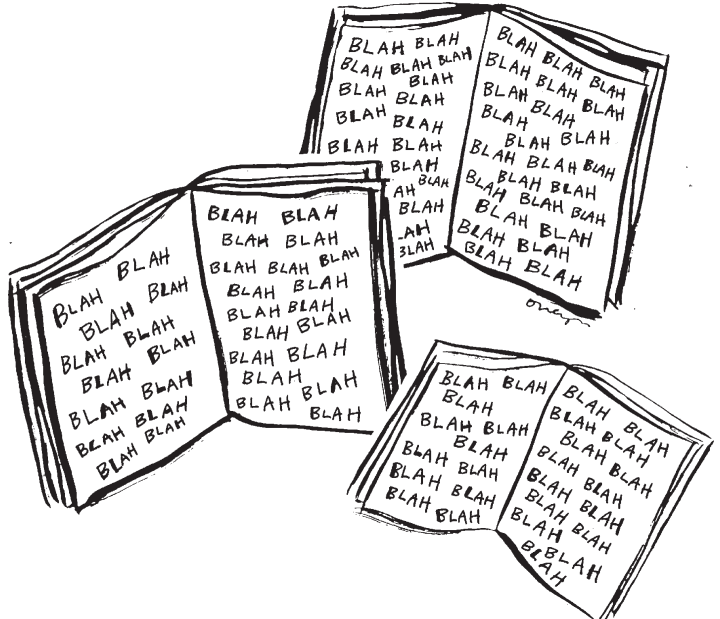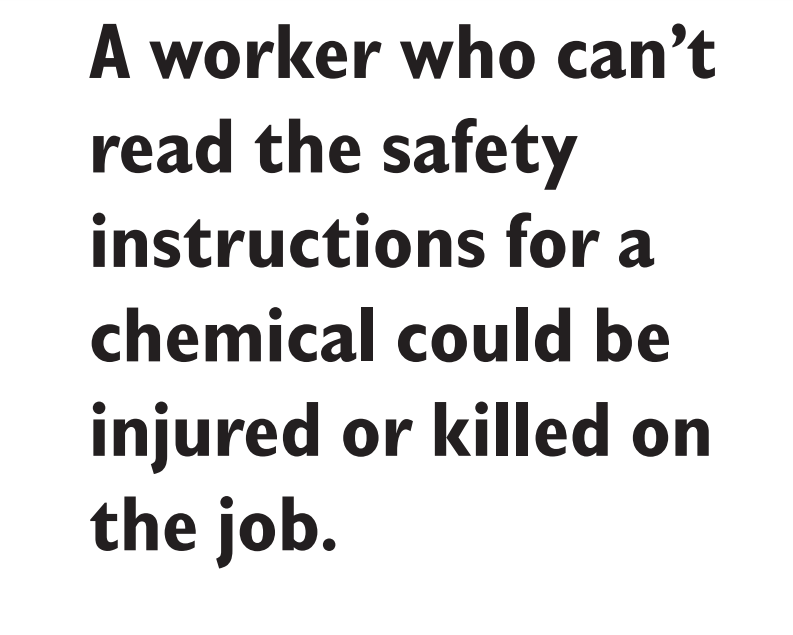In 2003 and 2004, the U.S. Department of Education tested 19,000 people over the age of 16 to determine how well they could use the written materials found in modern society. The survey is called the National Assessment of Adult Literacy. The people came from all 50 states. Their background information was collected so the results could be analyzed by age, race, education, income, employment, and other factors.
The test involved completing tasks which became more and more difficult. An example of a simple task is to find the expiration date on a driver’s license. A harder task would be to read a bus schedule to find out how to get downtown by 12 noon. The most difficult task would be to read something like a union contract and explain how a worker would qualify for sick leave pay.
Based on their test scores, people were put into one of four levels of literacy skills—Below Basic, Basic, Intermediate, and Proficient. Literacy is defined as: “Using printed and written information to function in society, to achieve one’s goals, and to develop one’s knowledge and potential.” The Department of Education published the results in a pamphlet named “Literacy in Everyday Life” in April 2007.
Survey results
According to the survey, some 14 percent or 30 million adults were Below Basic. They may be able to locate and use simple words, phrases, and numbers in everyday contexts and perform simple one-step arithmetic operations. They got most of their information from TV, radio, or talking. They relied on friends and co-workers for help with more difficult tasks and documents. Many of the people at this level had not completed high school or were not native speakers of English.

About 29 percent of adults or 63 million people were at the Basic level. People at this level are able to read simple words, phrases, and numbers in everyday contexts when the information is easily located and are able to solve one-step problems. They could use a street map to find a location. They could calculate the cost of a meal by adding the cost of items from a menu. Most of these people were high school graduates.

The Intermediate level contained 95 million people or 44 percent of the adults. They are able to read and use written materials to locate information in denser, less commonplace texts; summarize information; draw simple references; and make use of quantitative information when the arithmetic operation is not easily inferred. A task at this level involved writing a letter to explain an error on a credit card bill. People at this level completed college or had some college education.
Only 13 percent of adults or 28 million people were in the Proficient Level. These adults are able to read and use complex written material to integrate multiple pieces of information, perform analytical tasks, draw more sophisticated inferences, and make use of quantitative information when more complex relationships are involved. A task at this level required explaining the difference between two types of employee benefits. Another task involved calculating the total interest paid on a loan. Most of the people at this level had advance college degrees.
Trouble reading
Added together, there are 93 million people or 43 percent of the adults in the United States at the Basic or Below Basic level of literacy.
It is important to understand that the literacy test does not measure intelligence or the potential to learn. The test only measures the ability to use the materials written in English found in everyday life. While people at the Basic or Below Basic level may have trouble reading, they can speak and understand English. Instead of reading the newspaper, they get most of their information from television and radio. Instead of reading the union contract, they talk with co-workers to learn about their rights on the job.

By relying on oral forms of communicating, most of them are able to function like any other member of society. But their lower literacy skills can lead to serious trouble. A worker who can’t read the safety instructions for a chemical could be injured or killed on the job. A person who doesn’t understand the terms of a credit contract could lose everything in bankruptcy. People who can’t read the warning labels on their medication could put their health in danger.
Fortunately, people who are willing to make an effort to learn can easily improve their literacy skills.
There are many rewards that come with higher literacy. The survey found that people with higher literacy skills had more job opportunities and earned higher incomes. Their families were healthier and their children did better in school. The children did better because their parents were able to help them learn.
Read the stories on this page to learn more about the many educational opportunities for adults and how the union can help. ◆

